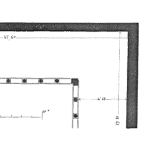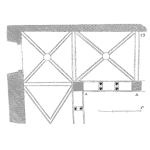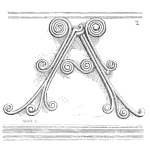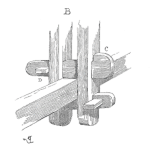
The technician explained it to me like this: “The part costs only $5, but I need to disassemble other stuff to get to it, so my labor charge will be $300. But don’t worry, I replace lots of these.”
[Read more…]Your Reliability Engineering Professional Development Site
The equipment used in oil and gas wells is designed to operate for long periods of time at very high absolute pressures and temperatures, frequently in highly corrosive environments, and with little opportunity for visual surveillance of equipment condition. The reliability of these products directly affects the economics of operating these wells, the environment, and the safety of the communities in which the wells are located. This series of five articles explores the risk and reliability associated with the downhole tools used in oil and gas well applications and provides recommendations for engineers on how to include reliability thought and practice in design.

The technician explained it to me like this: “The part costs only $5, but I need to disassemble other stuff to get to it, so my labor charge will be $300. But don’t worry, I replace lots of these.”
[Read more…]
The wellsite is 200 miles offshore, and based on experience with the application, your team is confident about reliability. But will the downhole tool survive the journey to setting depth?
[Read more…]
Do you need design margin in your product? A composite frac plug may need margin as a mitigation against uncertainty in material properties. Long service life products used in offshore wells are sometimes designed with structural margin as a mitigation against changing downhole conditions. But can margin be used for other parameters?
[Read more…]
Your team is developing a new downhole chemical injection valve for a client’s offshore well. The valve’s service life target reflects its electro-mechanical (EM) content and is much shorter than the well’s economic life. But the valve housing has an estimated structural service life that exceeds well economic life, so structural integrity will exist well beyond electro-mechanical failure. Will the shorter life of the electro-mechanical content satisfy client requirements?
[Read more…]
Your team has put together the Statement of Requirements (SoR) for the new completion tool wand it contains the target ratings. But the product must have a 10-year minimum service life at maximum rated operating conditions. And reliability expectations are high. Also, the product has electromechanical content and must have operational redundancy and allow contingency operation. However, there are no requirements for these in the SoR.
[Read more…]
Your team knows what Operation Within Specification (OWS) is for its product. This is the set of performance limits confirmed in the laboratory using API product standards. These limits help establish the ratings for parameters such as pressure, mechanical load, operating temperature, and other parameters found in operating manuals.
[Read more…]
Failure Simulation has confirmed all root causes in the Storm Packer failure analysis. The focus is now on mitigations that prevent them from occurring again.
Mitigations are controls that prevent failures or reduce their probability of occurring. Ideally, an OEM implements mitigations to the product through Design for Reliability (DfR) activities before commercialization. Some mitigations may be best practices in product design. Others may be best practices for installation or maintenance processes. Some have been acquired through FRACAS programs. However, all will be based on institutional knowledge.
[Read more…]
With the Storm Packer Root Cause Analysis complete, the probable RCs will be known. The next step is to confirm causation of the failure. In Failure Simulation (FS) the goal is to confirm cause and effect. When more than one probable RC has been identified, the FS will consist of multiple simulation tasks. How extensive will the Storm Packer’s FS program be?
[Read more…]
The information collected in the Storm Packer (SP) failure (Information) will establish:

In failure analysis, the collection of information is a tedious but necessary step that determines success in the root cause analysis (RCA), simulation, and mitigation phases. In Article 2, the SME identified five areas of possible root causes for the SP failure, further explained in Table 1.
[Read more…]
Analysis of the Storm Packer (SP) failure in Article 1 will be complicated. Some stakeholders will assume that the SP was defective, some will assume the drilling crew made mistakes, and others will assume that wellbore conditions predisposed the SP to fail. Any of these may explain the failure of the first SP, but only rigorous due diligence will uncover the root cause(s). What should be investigated, and what will be the roadmap for the analysis? [Read more…]

The floating drilling rig, operating in 6,000 ft. of water, pitched in rough seas 300 miles away from shore as the outer bands of the hurricane’s winds buffeted the drilling location. Per procedure, the crew installed the Storm Packer (SP) in the well to isolate its open wellbore from the ocean before the storm roared across the location – but it failed its pressure test. The crew then installed the back-up SP which passed the pressure test. The well was finally secured, and the 25,000-ton drilling rig was moved out of the hurricane’s path. Because the first SP failed, a 12-hour process took 30 hours to complete, while wind speed and wave heights increased.
[Read more…]
The Critical Equipment Series has covered design and design risk reduction. A Laboratory Test Program (LTP) is the final step in validating the equipment design after updating it with all improvements determined through design risk reduction and related activities.

Refer to Article 7 for the expansion joint project. This project had progressed – perhaps beyond lab testing – before it was realized that the design could not meet ASME LRFD criteria. LRFD was considered necessary for reliability. The engineering manager had to consider a redesign.
Missing the LRFD may be the result of not conducting a design failure modes and effects analysis (dFMEA). FMEA is a risk discovery process. Discovering design risks early in the project improves reliability and increases profitability by avoiding redesign and schedule delays. [Read more…]

A high-pressure packer for use in 9 5/8”, thick-walled, P-110 casing is being developed for a well barrier application. It is based on a legacy configuration. Is it a candidate for simulation?